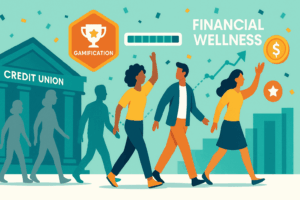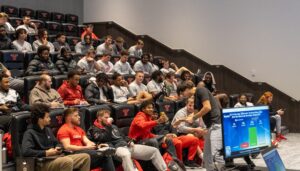The NYC Teacher Salary Guide will take you from just getting started on your financial journey as a teacher to retiring comfortably. First, thank you for being a New York City educator. We know that as teachers, you don’t get enough recognition for the work you do. At Ostrich we see you and created this guide as our way of saying thank you.
Getting Started with NYC Teacher Salary Guide
First off, congratulations on landing a teaching gig and dealing with the headaches of certifications, multiple degrees, and navigating the NYC DOE. Like 42.9 million other Americans, you likely have student loan debt. One of the perks of teaching is that if you work for 5 years at a qualified school (Title I), you are eligible for student loan forgiveness of up to $17,500 depending on your subject area.
To learn more about the student loan forgiveness program, check out our deep dive (coming soon) for everything you need to know.
Increasing Your NYC Teacher’s Salary
What’s cool about being a NYC teacher is that the salary pay scale is publicly available. This means how you move up the ladder to a higher salary is also transparent, though somehow more complicated to decipher than it should be. That being said, it often entails getting more degrees and education, which costs money. There are cheap ways to earn more credit hours like taking CLEP exams and finding inexpensive programs to get your Master’s +30 salary differential.
It’s important that as a NYC teacher if you qualify for a salary differential for higher pay, you apply right away. The reason is you will not get backdated pay from when you qualify. You only receive the higher salary from the time your application is approved. If you took any extra classes in college above the graduation requirement, those credits may be counted towards your +30 salary differential. Be sure to request your transcripts and see if you already qualify or are close to qualifying for a pay bump.
Reading the NYC Teacher Salary Chart
Let’s take a look at the salary chart to get an idea of the quickest way to increase your salary.
On the left-hand side of the chart (or Y-axis for our math teachers), you have your years of experience. The 1A vs 1B denotes experience by semesters. 1A represents a first-year teacher with no semesters of experience. 1B represents a first-year teacher with one semester of experience. At the top of the columns, you have the NYC teacher salary differential. This is where you have the ability to increase your pay by qualifying for the next salary differential. Below is the full chart and a summary of the main steps you can find the detailed breakdown of the salary differentials.

Salary Differential Steps Explained
- C1: This is the basic salary for those who have only a bachelor’s degree.
- C2: This is the first differential. It requires 30 credits beyond the bachelor’s degree requirement. These may be all excess undergraduate credits, all graduate credits, or a combination of both.
- C2+ID: This column, the intermediate differential (ID), applies to people who have earned their first differential and in addition have 60 credits beyond the bachelor’s.
- C2+PD: This is the promotional differential or PD. It requires 36 credits in an approved subject matter area; those 36 credits may be undergraduate, graduate, or a combination. Generally speaking, you qualify when you get your master’s degree.
- C2+ID+PD: This is for people who have met the requirements for the first differential, the intermediate differential and the promotional differential.
- C6+PD: This is the second differential. It can be achieved in several ways:
- With a master’s degree plus another 30 credits that were taken after the date of your bachelor’s but not as part of your master’s credits. The credits can be from undergraduate or graduate courses.
- If you are a teacher hired on or after Sept. 1, 2017, you must obtain a minimum number of A+ credits in order to earn your salary differential. Read more »
- With professional development courses and/or activities approved by the chancellor.
- By getting National Board for Professional Teaching Standards certification.
It’s important to note that if you are a non-degree career and technical teacher there are different salary differential steps. Learn more about how to apply for a salary differential or you can apply here.
Per Session
Another great way to earn more is by taking on Per Session opportunities, which are paid hourly at the rate of $53.98 for the 2021-2022 school year. Per Session opportunities include doing class coverages, leading clubs, after-school activities, and supporting Title I and Title III extra help. You get paid for the extra hours you put in. If none of the open Per Session activities at your school interest you, don’t be afraid to approach the administration with your idea. The majority of the time Admin will gladly accept your ideas for activities and clubs. Aim to take on Per Session activities that you enjoy, which is the ultimate way to make some extra money!
Check out the current NYC Teacher Per Session salary scale.
Track Your Per Session & Coverages
As a NYC teacher, it is your responsibility to ensure your extra coverages and Per Session activities are tracked properly. Because the DOE is a very large organization, sometimes hours are miscalculated. This means you may not get credit for all of the coverages and Per Session activities you performed. It’s important that you keep track of those activities and ensure when payday comes around that all of your worked hours are paid. If you don’t track these hours there is a chance you may be missing pay from hours that simply fell through the cracks.
If you find hours missing from your paycheck simply reach out to your payroll secretary with the hours you worked.
Private Tutoring
This is another great way to earn some extra money from parents and kids who need additional help. The key here is not to undervalue yourself on a per-hour basis. You can use the Per Session rate as a base rate, or a yardstick to ensure you are making a fair amount for the work you do.
What Exactly Do I Do With My NYC Teacher Salary?
First, set up contributions to your TDA. Since this money is pre-tax, contributing $300 a paycheck doesn’t reduce your take-home pay by a full $300 after taxes. This is because you lower your total taxable income each time you contribute to your TDA.
If your cost of living is lower because you live at home, with roommates, or for other reasons, aim to set your contribution percentage high initially. As your salary increases over the years, more money will automatically be contributed to your TDA even if you don’t increase your contribution percentage.
Set Up a Roth IRA
A Roth IRA is a different type of retirement account that you have full control over. The money you contribute is in after-tax dollars, meaning you pay tax now but in the future when you withdraw the money it isn’t taxed. As a New York City Teacher starting out you’ll be able to contribute up to the max limit per year ($6,000 for 2022 and $7,000 if you are 50+) to a Roth IRA. You can use a number of different service providers and some of our favorites are Charles Schwab, Vanguard & Fidelity.
It’s important to remember that YOU control this account, which means you have to invest the money yourself. It won’t be invested automatically. Don’t let this put you off though; there are easy, cheap ways to invest! We like buying low-cost index funds, like Vanguard’s S&P 500 tracker fund (stock ticker VOO).
Watch this video or read this article (coming soon) on how to purchase stocks.
Open a Credit Card BUT Use It Like a Debit Card
Credit cards aren’t bad when used properly. They do carry some of the highest interest rates around, though. The credit card companies want you to spend spend spend, then only pay the minimum balance so that they can charge you interest and make money off of you.
That being said, it is important to build credit, and opening a credit card is one of the easiest ways to do that. Good credit makes it easier and cheaper to buy a house, a car, or get a loan from a bank in the future. It directly affects whether you’ll qualify to borrow money, and how much interest you will pay. By treating your credit card like a debit card and always paying it off in full every month, you will build credit without costing yourself money in the form of interest payments.
There are many great credit cards with perks like points and cashback. To begin with, though, go for a no annual fee card like the Capital One Quicksilver cash back card. Something we really like about Capital One is that they only do a soft pull on your credit report when you request a credit line increase. That type of credit check does not affect your credit score.
If you have bad credit and can’t qualify for most credit cards, start with a secured credit card. To obtain a secured card, you would deposit $500, for example, with the credit card company. Then they would give you a credit limit of $500 to use like a regular credit card. When you close the credit card you get that initial $500 back.
Build an Emergency Fund
When you first start your job you’ll likely be making the least amount of money you’ll make in your career in the NYC DOE. While money may be tight, it’s important to start building up an emergency fund. The time to use this money is if you lose your income by leaving the DOE, or if an unexpected expense arises such as an unplanned medical expense, housing or vehicle emergency, or something in between.
A good rule of thumb is to save up at least 6 months’ worth of living expenses.
Save for Breaks
One of the great things about being a NYC teacher is that you get breaks throughout the year for long weekends, holidays, February break, spring break, and of course summer break. While there are plenty of Per Session opportunities and summer school work you can do, you’ll likely also want to take advantage of the time off to travel, do fun activities, and spend time with family. Set aside money in a separate savings account for those experiences!
Spending Your NYC Teacher’s Salary
This is a tough one because everyone has a different relationship with money and gets joy from different things. For example, I know a NYC teacher who loves traveling above all else. They couldn’t care less about living in a super nice apartment. That teacher chooses to save money on an apartment and instead spends extra money on travel. In contrast, another NYC teacher who is a dear friend cares more about having an apartment that is roommate-free. Instead, the roommate-free teacher doesn’t have a car and doesn’t eat out frequently so they can have an apartment of their own.
This is where you have to do some introspection to determine what it is that makes you happy.
Teacher Discounts
A number of companies including Apple, Barnes and Noble, and Michaels all provide discounts for teachers. Visit the UFT discount website or check out this general teacher discount guide to find a larger selection of discounts for members of the NYC DOE.
School Supplies
Almost every teacher has done it. Spending their own money on school supplies for a lesson, lab, or decorations. There’s nothing wrong with spending money on your students and classroom, but when you can avoid it, you should. There are options like DonorsChoose and GoFund me where you can get donations from the community, corporations, and good samaritans.
To avoid spending your own money on school supplies, list out what supplies you’ll need before the school year begins. Using your supply list, ask for donations, use the services listed above, and get involved in community organizations.
Additionally, even if a project on DonorsChoose doesn’t get fully funded you can use your own money to round out the donation so you aren’t coming completely out of pocket.
Teacher’s Choice
As a NYC teacher, you’ll get access to Teacher’s Choice money. The purpose of this money is for you to spend on school supplies. For the 2021-2022 school year, you can get reimbursed up to $250. In order to take advantage of this money, you have to keep your receipts from the start of the fall semester and submit them by the deadline.
It’s important to note that the money will be refunded in a future check and unfortunately counts as income versus a traditional reimbursement. Still, take advantage of Teacher’s Choice money for those school supplies that come up unexpectedly and you aren’t able to get through donations at the beginning of the year.
Alternative Teaching Pathways
If you are joining the NYC DOE through an alternative teaching pathway where you start working while you are still in school like the New York City Teaching Fellows, you have the option to defer student loan repayments. When choosing to defer, it is very important to file the paperwork right away. If you don’t you’ll get fined and hurt your credit score for not making on-time payments.
Let’s Talk NYC Teacher Financial Perks Beyond Salary
Retirement Accounts
There are two main retirement vehicles you have access to as a NYC teacher. The first is your pension. There are a lot of nuances to how the pension will impact your retirement income. There is also plenty of well-intentioned but misguided advice out there, which we’ll come back to shortly. The second retirement vehicle you have access to is your 403(b) which is also referred to as your tax-deferred annuity or “TDA”. Put simply your TDA works just like a 401(k) does in the private sector with a few minor differences.
Pension
You do not directly control how much you will receive in retirement through your NYC Pension. Your payouts will be based on when you started, how much you earned during your career, how long you stayed in the NYC DOE, and when you retired. Obviously, you can influence some of those factors but payouts themselves are just based on a set formula.
TDA Program
Conversely, you do control what percentage of your pre-tax paycheck you contribute to the TDA Program. For 2022, you can contribute up to a maximum of $20,500. The limit typically increases each year so check the IRS website for the most up-to-date limit. If you’d like to max out your TDA you’ll need to make sure your contribution percentage is high enough based on your annual salary. For example, if you make $75,000 per year before taxes you’ll need to have your contribution percentage set to at least 28%. Obviously, it’s important to ensure you have enough money for your living expenses. It’s okay to work towards this goal over time.
Choosing from a handful of options, you decide how the money is invested. The advantage of a TDA is that, like a 401(k), whatever money you contribute is yours. If you leave the DOE you can choose what to do with that money.
If you want to dive deeper into how exactly the pension and TDA work, check out our Ultimate NYC Teacher Retirement Guide.
Investing Outside of Retirement Accounts
The investing accounts we’ve covered thus far are all focused on retirement saving and investing. While that is a crucial pillar, it’s not the only way to invest.
One way to earn more money is to invest through a traditional investing account called a brokerage account. If you want to have the flexibility to pick your own stocks and direct your own investments, open up a brokerage account. We recommend using the same institution you opened your Roth IRA. They will be separate accounts but that’s one less login to remember.
At Ostrich we like the providers listed in the Roth IRA section. Again the easiest way to get started is to buy VOO, the low-cost Vanguard index fund that tracks the S&P 500. The S&P 500 is an index of the leading 500 U.S. stocks based on a number of factors.
There are many other ways to invest, like buying rental properties, cryptocurrency, collectibles, and so much more. Those options are great if alternative investing really excites you, and you have a strong foundation in your retirement accounts. If you’re just starting out, you might want to look at investing tools like Acorns that make investing simple and fun.
Final Steps
We’ve covered a lot of ground in this NYC teacher salary guide. It would be easy to read this and move on with your day. Instead, we’re giving you homework due tomorrow. First, open up the TRS portal and increase or set your contribution to your TDA right now. There’s even a calculator to estimate how much your take-home pay will be affected by different contribution amounts.
Next, open up a Roth IRA and add at least $100 to the account. From there, if you don’t already have a separate savings account for your emergency fund, create one. It’s important to keep the money separate so you don’t accidentally spend it.
Be sure to apply for a salary differential step if you qualify as pay is not backdated from when you qualify, but starts from when you apply. Don’t leave a pay increase you qualify for on the table.
If you need more guidance or support, please join other New York City Teachers on Ostrich where you can talk about money in a safe space. There are also fun financial challenges that will help you achieve your financial goals whatever they may be.














